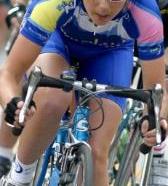How to Tell If You Need a Proper Bike Fit: Watch Your Knees
Posted by Matt Russ on 7th Nov 2025
How to Tell If You Need a Proper Bike Fit: Watch Your Knees
One of the easiest ways to determine whether a cyclist needs a proper bike fitting is by observing their knee alignment while pedaling. When the saddle fore/aft position and saddle height are correctly adjusted—and the foot/pedal interface is properly set—the cyclist’s knees should track directly under the hips, and the feet should stay aligned beneath the knees.
The Importance of Saddle Height and Alignment
During a professional bike fitting, a laser line is often used from the front to assess and fine-tune alignment.
-
Saddle too low: When the saddle is positioned too low, the knees naturally move outward due to poor biomechanics. You’ll see a “knees-out” or “V-shaped” pedaling motion—something most riders have observed on group rides.
-
Saddle too high: Cyclists typically feel when their saddle is too high. Hips begin to rock side to side as they stretch to reach the bottom of the pedal stroke. It feels unnatural and inefficient.
Conversely, a saddle that’s too low may still feel comfortable—even though it significantly reduces power output. Many riders don’t realize how far off their fit is until they’re properly adjusted. In several fit evaluations, I’ve seen saddles several inches too low; after correction, riders immediately experienced increased power and efficiency due to improved leverage and a fuller range of motion.
Cleat and Foot Position: Another Key Factor
A cleat position or stance width that’s too narrow can also cause a “knees-out” pedaling style, though typically to a lesser extent. Correct foot-pedal alignment helps your legs function more like horizontal pistons, minimizing lateral knee movement. A slight inward motion toward the top tube is natural and usually harmless.
If you notice your knees flaring outward—or see another rider pedaling that way—it’s time for some bike fit adjustments or, ideally, a professional bike fitting.
How Saddle Height Affects Knee Health
It’s important to remember that raising the saddle doesn’t just change height—it also affects fore/aft position and the rider’s relationship to the pedal spindle. This can influence anterior or posterior knee pain. Because the seat tube is angled, increasing saddle height also moves it slightly rearward.
A simple way to estimate saddle height:
Place your heel on the pedal at the bottom dead center of the stroke. Your leg should be almost straight. However, this method only gives a rough estimate and doesn’t account for fore/aft positioning, which is equally important.
Why “Knees-Out” Pedaling Can Lead to Injury
“Knees-out” pedaling is not just inefficient—it’s potentially harmful. Misalignment can strain the cartilage, ligaments, and tendons around the knee joint. The patella (kneecap) tracks in a defined groove, and poor pedaling mechanics can lead to overuse injuries such as patellofemoral pain syndrome.
Proper knee alignment engages the vastus medialis oblique (VMO)—the teardrop-shaped muscle near the top tube—which helps stabilize the kneecap and maintain correct tracking.
Final Thoughts: Check Your Knees, Improve Your Ride
Watching your knees—or having someone observe them while you ride—is one of the easiest and most effective ways to assess your bike fit. If your knees flare out, your saddle is likely too low. Correcting this can dramatically improve your power output, comfort, and long-term knee health.



